Opinion & Analysis
A deep dive into “toe hang” of a putter, and why it matters
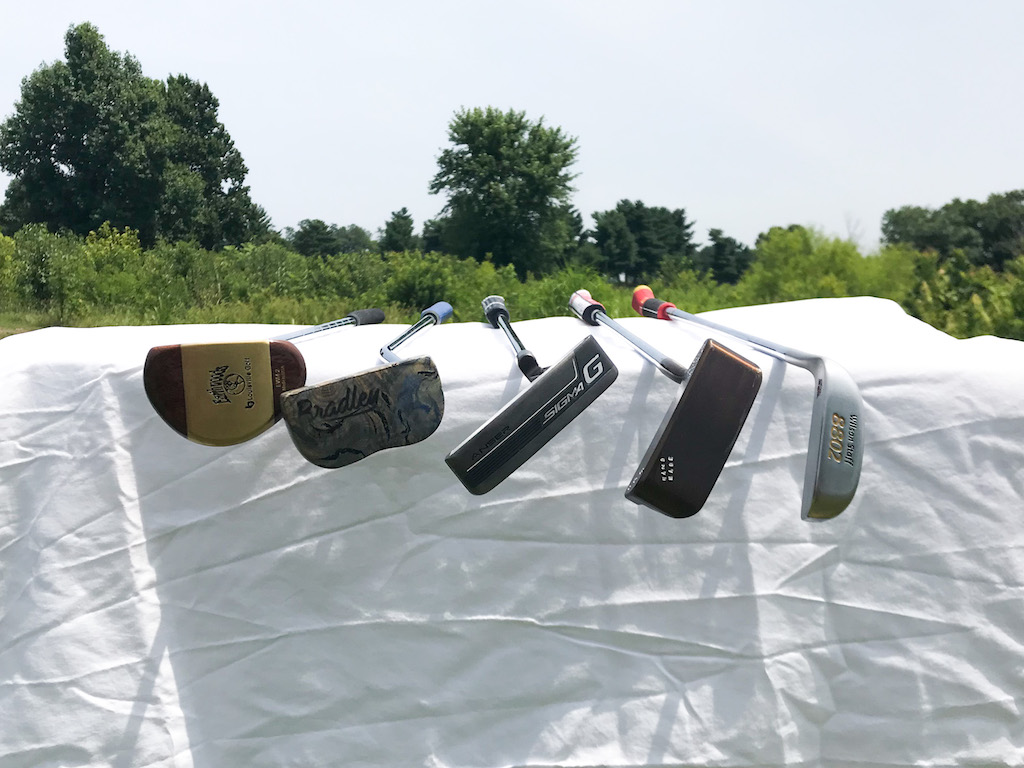
Let’s start with the basics just to be sure everyone is on the same page. When people talk about toe hang (at least in the traditional sense), what exactly are they talking about?
Grab your putter and lay it on a flat surface with the putter head hanging freely off the edge. Now, look at where the toe of your putter is pointing and imagine a clock face is centered on the axis of the shaft. The closer the toe of your putter is to pointing at 6:00, the more toe hang it has. The closer the toe of your putter is to pointing at 9:00 (for a right-handed golfer), the less toe hang it has. If the toe of the putter is pointing directly at 9:00 (where the face is pointing straight up), that is referred to as “face balanced.” If the toe of the putter is pointing at 7:30, that is generally referred to as “1/4 toe hang.” If the toe of the putter is pointing directly at 6:00, that is commonly referred to as “full toe hang.” Generally speaking, the majority of putters will fall on a spectrum somewhere between face balanced and full toe hang.
Of course, there are exceptions to that, but the point of this article will be to address more traditional designs.
What determines Toe Hang?
In technical terms, toe hang is determined by the relationship between the axis of the shaft and the center of gravity of the putter. If the two are perfectly aligned, the result is a face balanced putter. However, as the axis of the putter shaft gets closer to the golfer in relation to the putter’s center of gravity when addressing the golf ball, more toe hang will be the result. What that means from a feel perspective is that more toe hang will place the weight of the putter farther away from your hands as you swing the putter. That displacement will effectively place a moment arm on the putter shaft as you swing it, encouraging the face to open as you go back and then close as you move through the ball. Conversely, a face balanced putter will not want to torque at all naturally during the course of swinging the putter, as the two points are aligned with each other.
Something else to keep in mind is that there are two components to a torque or a moment. One is the distance between the two points (also referred to as the moment arm), which is essentially what we’ve been talking about up to now. The second component is the amount of force acting at that distance. As the weight of your putter increases, so will the effect of more or less toe hang. In practice, an original Ping Anser from 40 years ago won’t engage the hands in the same way during the stroke that a Ping Anser from today will due to today’s putter being 25-30 grams heavier. That may not sound like much until you point out that it’s a 10 percent increase.
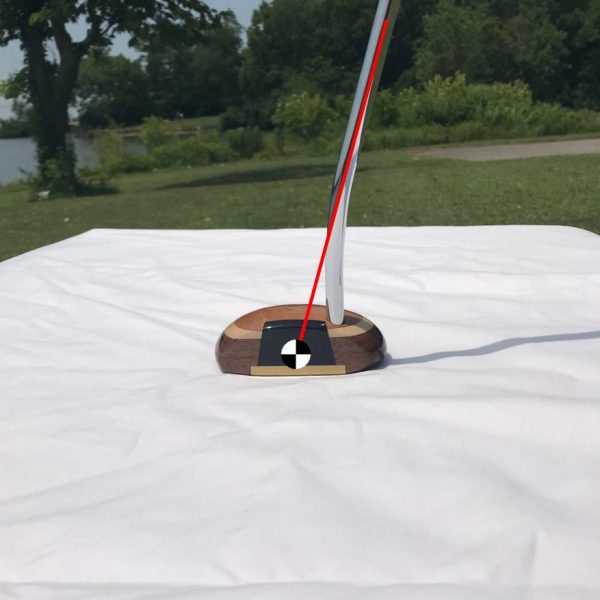
Face-balanced putter’s relationship between axis of shaft (red line) and putter CG
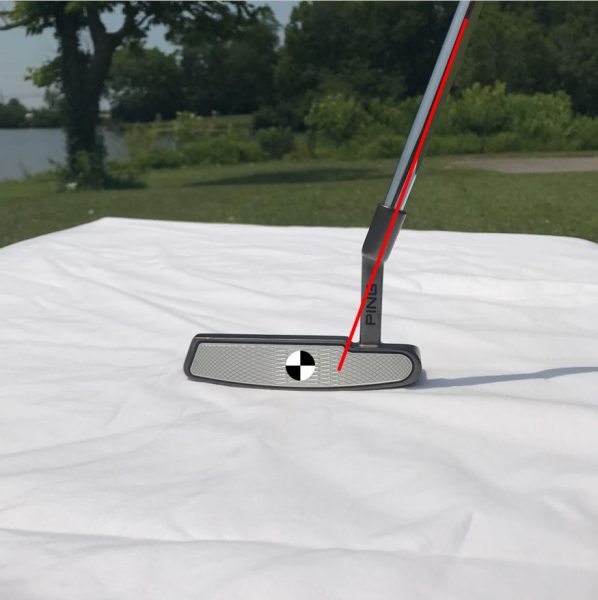
Ping Anser’s relationship between axis of shaft (red line) and putter CG
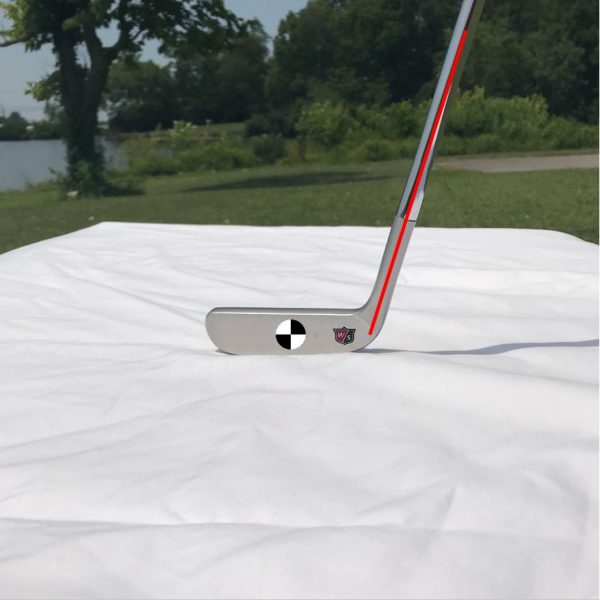
8802’s relationship between axis of shaft (red line) and putter CG
What does Toe Hang actually do?
In the interest of full disclosure, I would have to submit that there is a myriad of characteristics that make a certain putter perfect for a particular golfer. This article is a deep dive into just one of those topics. We have to assume the putter’s length, lie angle, loft, offset, static weight, swing weight, grip size, grip shape, etc. are already suited to the golfer. We also have to assume the putter fits the golfer’s eye, feels right, and inspires confidence. Assuming those have all been configured correctly, let’s address what toe hang can do for a golfer.
Let’s go back to our previous discussion about more toe hang encouraging more torqueing of the putter face. Ultimately, you need to ask yourself what you want to feel when swinging the putter, as toe hang will contribute a lot to how the golfer feels where the face of the putter is. A golfer who prefers a lot of toe hang will complain that he or she has no idea where the face is when swinging a face balanced putter. On the contrary, a golfer who prefers a face balanced putter will feel like he or she has to fight with the putter in order to square the face of a heel-shafted blade.
As a general rule, more toe hang will either encourage or better suit a stronger arc in the putting stroke. One of the more classic examples of this arrangement would be Ben Crenshaw’s fluid, swinging-a-door putting stroke matched to the iconic heel-shafted blade putter he so famously wielded over the years.
Putters in the vicinity of ¼ toe hang (probably most of which would be somehow related to the trusty Ping Anser) generally encourage or better suit a slight arc in the putting stroke. Examples of this setup are nearly endless, but arguably one of the more successful would be Brad Faxon, who holds the record for lowest putts per GIR in a PGA Tour season at 1.704.
Face-balanced putters (as you might have guessed) generally encourage or will better suit a straight-back, straight-through putting stroke. These types of putters will most often appear in the form of a mallet with a double bend shaft. This recipe is one that has been widely attributed to legendary instructor Dave Pelz and his teaching methodology.
What does all of this ultimately mean?
When you go shopping for a new flat stick, try out different amounts of toe hang and get a feel for how they engage your hands as you swing the putter. Ultimately, that’s what you’re paying attention to. Different amounts of toe hang will allow you to have a different feel for where the face of the putter is, which will have different effects on how you release the putter. This will affect both the location you strike the ball on the face as well as your face angle control, so having a poor match could adversely affect both your distance and directional control.
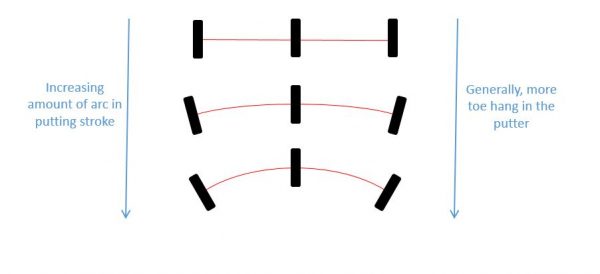
Different putting stroke paths and their general relationship with toe hang
There is no “one size fits all” answer for what works, but as I alluded to above, there are some general guidelines for where you can start. As a rule, the more arc you have in your stroke, the more toe hang you will likely prefer. With that being said, there are exceptions to every rule. While it’s generally true that an 8802 is a good match with a strong arc stroke (for example), there are also cases where a golfer’s natural strong arcing stroke might benefit from something with less toe hang. Placing the center of gravity of the putter closer to the axis of the shaft could possibly quiet the golfer’s hands during the putting stroke. This, of course, depends on whether your personal putting stroke needs correcting or simply complimenting.
Also, your typical miss patterns could indicate a mismatch between you and the toe hang in your putter. If you miss a lot of putts to the right (for a right-handed golfer), a putter with less toe hang might help you correct that. Obviously, the reverse of that might also help you if you miss to the left often.
In short, while there are some general guidelines to follow that serve as good starting points, there is no cookie-cutter answer for finding the right putter from you apart from a fitting with an experienced professional. And when you find the right recipe for YOU, stick with it. No two golfers are the same and no two putters are the same.
- LIKE714
- LEGIT65
- WOW23
- LOL12
- IDHT8
- FLOP14
- OB7
- SHANK54
19th Hole
Vincenzi’s 2024 RBC Heritage betting preview: Patrick Cantlay ready to get back inside winner’s circle
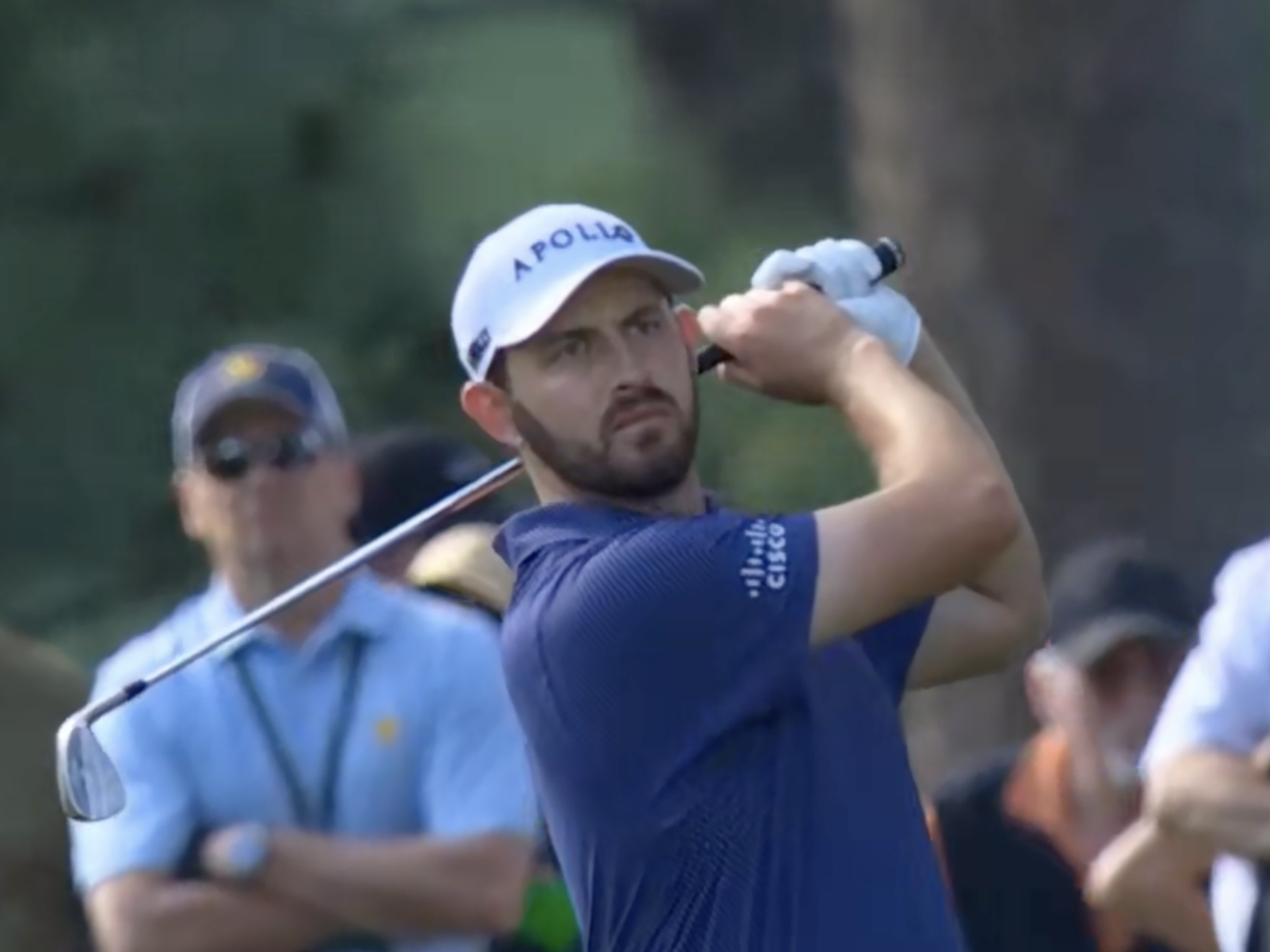
Just a two-hour drive from Augusta National, the PGA TOUR heads to Harbour Town Golf Links in Hilton Head Island, S.C. Hilton Head Island is a golfer’s paradise and Harbour Town is one of the most beautiful and scenic courses on the PGA TOUR.
Harbour Town Golf Links is a par-71 that measures 7,121 yards and features Bermuda grass greens. A Pete Dye design, the course is heavily tree lined and features small greens and many dog legs, protecting it from “bomb-and-gauge” type golfers.
The field is loaded this week with 69 golfers with no cut. Last year was quite possibly the best field in RBC Heritage history and the event this week is yet another designated event, meaning there is a $20 million prize pool.
Most of the big names on the PGA Tour will be in attendance this week with the exceptions of Hideki Matsuyama and Viktor Hovland. Additionally, Webb Simpson, Shane Lowry, Gary Woodland and Kevin Kisner have been granted sponsors exemptions.
Past Winners at Harbour Town
- 2023: Matt Fitzpatrick (-17)
- 2022: Jordan Spieth (-13)
- 2021: Stewart Cink (-19)
- 2020: Webb Simpson (-22)
- 2019: CT Pan (-12)
- 2018: Sotoshi Kodaira (-12)
- 2017: Wesley Bryan (-13)
- 2016: Branden Grace (-9)
- 2015: Jim Furyk (-18)
In this article and going forward, I’ll be using the Rabbit Hole by Betsperts Golf data engine to develop my custom model. If you want to build your own model or check out all of the detailed stats, you can sign up using promo code: MATTVIN for 25% off any subscription package (yearly is best value).
Key Stats For Harbour Town
Let’s take a look at key metrics for Harbour Town Golf Links to determine which golfers boast top marks in each category over their past 24 rounds.
Strokes Gained: Approach
Strokes Gained: Approach is exceedingly important this week. The greens at Harbour Town are about half the size of PGA TOUR average and feature the second-smallest greens on the tour. Typical of a Pete Dye design, golfers will pay the price for missed greens.
Total SG: Approach Over Past 24 Rounds
- Scottie Scheffler (+1.27)
- Tom Hoge (+1.27)
- Corey Conners (+1.16)
- Austin Eckroat (+0.95)
- Cameron Young (+0.93)
Good Drive %
The fairways at Harbour Town are tree lined and feature many dog legs. Bombers tend to struggle at the course because it forces layups and doesn’t allow long drivers to overpower it. Accuracy is far more important than power.
Good Drive % Over Past 24 Rounds
- Brice Garnett (88.8%)
- Shane Lowry (+87.2%)
- Akshay Bhatia (+86.0%)
- Si Woo Kim (+85.8%)
- Sepp Straka (+85.1%)
Strokes Gained: Total at Pete Dye Designs
Pete Dye specialists tend to play very well at Harbour Town. Si Woo Kim, Matt Kuchar, Jim Furyk and Webb Simpson are all Pete Dye specialists who have had great success here. It is likely we see some more specialists near the top of the leaderboard this week.
SG: TOT Pete Dye per round over past 36 rounds:
- Xander Schauffele (+2.27)
- Scottie Scheffler (+2.24)
- Ludvig Aberg (+2.11)
- Brian Harman (+1.89)
- Sungjae Im (+1.58)
4. Strokes Gained: Short Game (Bermuda)
Strokes Gained: Short Game factors in both around the green and putting. With many green-side bunkers and tricky green complexes, both statistics will be important. Past winners — such as Jim Furyk, Wes Bryan and Webb Simpson — highlight how crucial the short game skill set is around Harbour Town.
SG: SG Over Past 24 Rounds
- Jordan Spieth (+1.11)
- Taylor Moore (+1.02)
- Wyndham Clark (+0.98)
- Mackenzie Hughes (+0.86)
- Andrew Putnam (+0.83)
5. Greens in Regulation %
The recipe for success at Harbour Town Golf Links is hitting fairways and greens. Missing either will prove to be consequential — golfers must be in total control of the ball to win.
Greens in Regulation % over past 24 rounds:
- Brice Garnett (+75.0%)
- Scottie Scheffler (+69.9%)
- Corey Conners (+69.0%)
- Shane Lowry (+68.3%)
- Patrick Rodgers (+67.6%)
6. Course History
Harbour Town is a course where players who have strong past results at the course always tend to pop up.
Course History over past 24 rounds:
- Patrick Cantlay (+2.34)
- Cam Davis (+2.05)
- J.T. Poston (+1.69)
- Justin Rose (+1.68)
- Tommy Fleetwood (+1.59)
The RBC Heritage Model Rankings
Below, I’ve compiled overall model rankings using a combination of the five key statistical categories previously discussed — SG: Approach (24%), Good Drives (20%), SG: SG (14%), SG: Pete Dye (14%), GIR (14%), and Course History (14%)
- Shane Lowry
- Russell Henley
- Scottie Scheffler
- Xander Schauffele
- Corey Conners
- Wyndham Clark
- Christiaan Bezuidenhout
- Matt Fitzpatrick
- Cameron Young
- Ludvig Aberg
2024 RBC Heritage Picks
Patrick Cantlay +2000 (FanDuel)
With the exception of Scottie Scheffler, the PGA Tour has yet to have any of their star players show peak form during the 2024 season. Last week, Patrick Cantlay, who I believe is a top-5 players on the PGA Tour, took one step closer to regaining the form that’s helped him win eight events on Tour since 2017.
Cantlay limped into the Masters in poor form, but figured it out at Augusta National, finishing in a tie for 20th and ranking 17th for the week in Strokes Gained: Ball Striking. The former FedEx Cup champion will now head to one of his favorite golf courses in Harbour Town, where he’s had immaculate results over the years. In his six trips to the course, he’s only finished worse than 7th one time. The other finishes include three third places (2017, 2019, 2023) and one runner-up finish (2022). In his past 36 rounds at Harbour Town, Cantlay ranks 1st in Strokes Gained: Total per round at the course by a wide margin (+2.36).
Cantlay is winless since the 2022 BMW Championship, which is far too long for a player of his caliber. With signs pointing to the 32-year-old returning to form, a “signature event” at Harbour Town is just what he needs to get back on the winning track.
Tommy Fleetwood +3000 (FanDuel)
I truly believe Tommy Fleetwood will figure out a way to win on American soil in 2024. It’s certainly been a bugaboo for him throughout his career, but he is simply too talented to go another season without winning a PGA Tour event.
At last week’s Masters Tournament, Fleetwood made a Sunday charge and ended up finishing T3 in the event, which was his best ever finish at The Masters. For the week, the Englishman ranked 8th in the field in Strokes Gained: Approach, 10th in Strokes Gained: Ball Striking and 16th in Strokes Gained: Putting.
Harbour Town is a perfect layout for Fleetwood, and he’s had relative success at this Pete Dye design in the past. In his four trips to the course, he’s finished inside of the top 25 three times, with his best finish, T10, coming in 2022. The course is pretty short and can’t be overpowered, which gives an advantage to more accurate players such as Fleetwood. Tommy ranks 8th in the field in Good Drive % and should be able to plot his way along this golf course.
The win is coming for Tommy lad. I believe there’s a chance this treasure of a golf course may be the perfect one for him to finally break through on Tour.
Cameron Young +3300 (FanDuel)
Cameron Young had a solid Masters Tournament last week, which is exactly what I’m looking for in players who I anticipate playing well this week at the RBC Heritage. He finished in a tie for 9th, but never felt the pressure of contending in the event. For the week, Young ranked 6th in Strokes Gained: Off the Tee and 6th in Strokes Gained: Ball Striking.
Despite being one of the longest players off the tee on the PGA Tour, Young has actually played some really good golf on shorter tracks. He finished T3 at Harbour Town in 2023 and ranks 20th in the field in Good Drive% and 16th in Greens in Regulation in his past 24 rounds. He also has strong finishes at other shorter courses that can take driver out of a players hand such as Copperhead and PGA National.
Young is simply one of the best players on the PGA Tour in 2024, and I strongly believe has what it takes to win a PGA Tour event in the very near future.
Corey Conners +5500 (FanDuel)
Corey Conners has had a disappointing year thus far on the PGA Tour, but absolutely loves Harbour Town.
At last week’s Masters Tournament, the Canadian finished T30 but ranked 20th in the field in Strokes Gained: Approach. In his past 24 rounds, Conners ranks 3rd in the field in Strokes Gained: Approach, 3rd in Greens in Regulation % and 24th in Good Drive %.
In Conners’ last four trips to Harbour Town, his worst finish was T31, last season. He finished T4 in 2021, T12 in 2022 and ranks 8th in Strokes Gained: Total at the course over his past 36 rounds.
Conners hasn’t been contending, but his recent finishes have been encouraging as he has finished in the top-25 in each of his past three starts prior to The Masters, including an impressive T13 at The PLAYERS. His recent improvement in ball striking as well as his suitability for Harbour Town makes Conners a high upside bet this week.
Shane Lowry (+7500) (FanDuel)
When these odds were posted after Lowry was announced in the field, I have to admit I was pretty stunned. Despite not offering much win equity on the PGA Tour over the last handful of years, Shane Lowry is still a top caliber player who has the ability to rise to the top of a signature event.
Lowry struggled to score at The Masters last week, but he actually hit the ball really well. The Irishman ranked 1st for Strokes Gained: Approach on the week and 7th in Strokes Gained: Ball Striking. As usual, it was the putter that let him down, as he ranked 60th in the field in Strokes Gained: Putting.
Harbour Town is most definitely one of Lowry’s favorite courses on the PGA Tour. In his six starts there, he’s finished in the top 10 three times, including third twice. Lowry is sensational at Pete Dye designs and ranks 7th in Strokes Gained: Total in his past 36 rounds on Dye tracks.
Lowry is perfect for Harbour Town. In his past 24 rounds, he ranks 5th in Strokes Gained: Approach, 2nd in Good Drive% and 5th in Green in Regulation %. If he figures it out on the greens, Shane could have his first win in America since 2015.
Lucas Glover +12000 (FanDuel)
This is one of my weekly “bet the number” plays as I strongly believe the odds are just too long for a player of Glover’s caliber. The odds have been too long on Glover for a few weeks now, but this is the first event that I can get behind the veteran being able to actually contend at.
Glover is quietly playing good golf and returning to the form he had after the understandable regression after his two massive victories at the end of 2023. He finished T20 at The Masters, which was his best ever finish at Augusta National. For the week, Lucas ranked 18th for Strokes Gained: Approach and 20th in Strokes Gained: Ball Striking.
Over his past 24 rounds, Glover ranks 9th in Strokes Gained: Approach and 13th in Good Drive %. Harbour Town is a short course that the 44-year-old will be able to keep up with the top players on Tour off the tee. He’s played the course more than 20 times, with mixed results. His best finishes at Harbour Town include a T7 in 2008, but recently has a finish of T21 in 2020.
Glover has proven he can contend with the stars of the Tour on any given week, and this number is flat out disrespectful.
- LIKE26
- LEGIT5
- WOW1
- LOL1
- IDHT1
- FLOP2
- OB0
- SHANK1
19th Hole
Vincenzi: The 6 biggest takeaways from the 2024 Masters
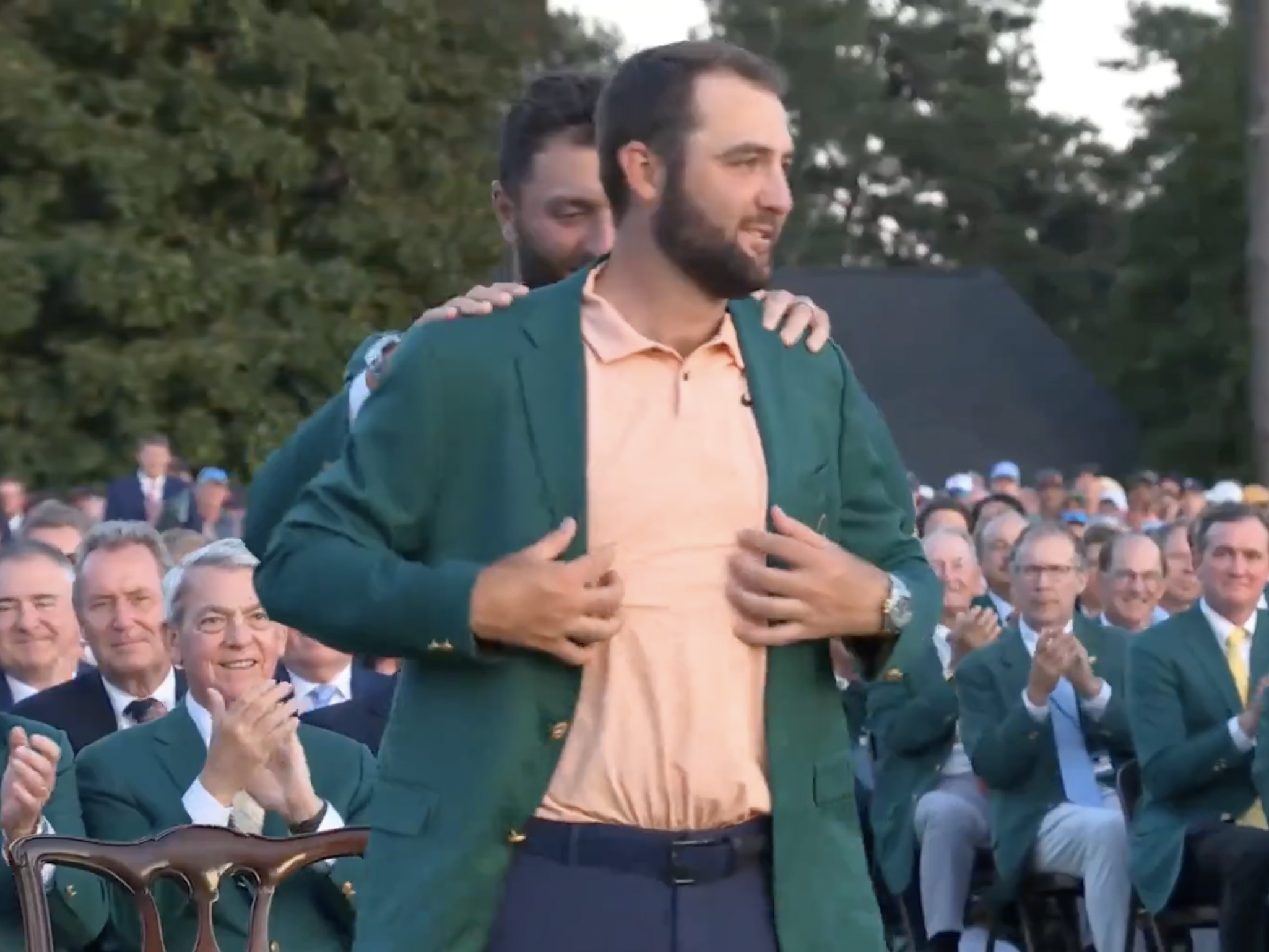
The 2024 Masters offered up plenty of excitement throughout the week with Scottie Scheffler delivering when it mattered to live up to his pre-tournament favorite tag. With the year’s opening major now in the books, here are my six biggest takeaways from the 2024 Masters.
Scheffler In a League of His Own
In the most impressive way possible, Scottie Scheffler won the Masters without having his absolute best stuff. For the week, Scottie ranked 19th in Strokes Gained: Approach, which is a category the number player in the world typically dusts the rest of the field in. After a strong approach day on Thursday, the 27-year-old lost strokes to the field on approach on Friday and Saturday, before gaining on Sunday. The iron performance was more than solid, but it was an all-around game that helped Scheffler get it done around Augusta National.
For a year or more, the narrative around Scheffler has been, “With his ball striking, if he can just putt to field average, he’ll be unbeatable.” At Augusta, his ball striking came back down to earth, but his touch around the greens and ability to manage the golf course demonstrated why he is the best player on the planet right now. For the week, Scheffler ranked 1st in the field in Strokes Gained: Around the Green and 24th in Strokes Gained: Putting.
For the time being, there is a major gap between Scottie Scheffler and the second-best player in the world, whoever that may be.
The Future is Now
Ludvig Aberg went into his first back-nine at the Masters with a legitimate shot to win the tournament. When he teed it up on the treacherous 11th hole, he was one behind Scottie Scheffler, who had just stuck one to a few feet on the 9th. By the time he approached his tee shot, which was perfectly striped down the left side of the fairway, he was two behind. Unfortunately, the 24-year-old got too aggressive with his approach at the 11th and found the water, making double bogey. Ludvig rebounded nicely and finished the event in solo second place.
With the Masters now in the rearview, it’s never been more evident that Ludvig Aberg is no longer an “up-and-comer” — he has arrived. The Swede has been an integral part of a winning European Ryder Cup team and has now contended at Augusta National. With a calm demeanor, a picture-perfect swing, and a build and stature that appears as if it was built in a lab, Ludvig Aberg is already amongst the world’s best. I’d be extremely surprised if he wasn’t in the mix at next month’s PGA Championship at Valhalla.
Nostalgia Wins
I try to avoid as many cliches as possible, but there’s something about the Masters that brings out the sentimentality in me. Tiger Woods strategically making his way around Augusta National without all of the physical tools that made him arguably the most dominant athlete in the history of sports will always be riveting, regardless of what score he shoots. Woods made it interesting until a tough stretch of holes on Saturday, but he ultimately wore down, shooting 16 over for the week in difficult conditions. It’s remarkable that the 15-time major champion was able to put together a few solid rounds of golf despite barely playing any competitive golf in 2024. As long as Woods tees it up at Augusta, we will all continue to be mesmerized by it.
Verne Lundquist’s 40th and final Masters Tournament was also a must-watch aspect of the event. The iconic voice of Lundquist and his calls throughout the years still give me chills each time I hear them. Verne is an icon of the game and will be missed in future renditions of the Masters.
The Masters also brings another element that is unique to the tournament. Former champions turn back the clock to battle with the golf course again which creates some amazing stories. There are a few that stick out this year and were an absolute pleasure to witness. 61-year-old Vijay Singh made the cut for the first time since 2018 and shot a pretty incredible even-par, 72 on Sunday. 58-year-old José María Olazábal made the cut as well, reminding us why fellow Spaniard Jon Rahm sought his valuable advice prior to his Masters victory in 2022.
Regardless of who wins, the Masters always delivers.
Bryson Moves the Needle
Plenty will disagree with me on this point, but outside of Tiger Woods, and potentially Rory McIlroy and Jordan Spieth, no one moves the needle in golf as much as Bryson DeChambeau. The uniqueness in which Bryson approaches the game has always been fascinating, and if he gets near the top of the leaderboard at any major championship, whether it’s to root for him or against him, people are interested.
It began on Monday with a pretty bizarre story of DeChambeau using 3D-printed irons that got just got cleared for use by the USGA when the week began. It once again felt like a storyline that would only be possible with a character as eccentric as Bryson. He then raced off to a first-round lead in tough conditions, reminding the world of what made him such a great golfer to begin with. He made some mistakes on the weekend, but still finished a career best T6 at The Masters.
Bryson is more than just quirky; he is a former U.S. Amateur Champion and U.S. Open who I believe will contend for more majors in the future. I will continue to root for DeChambeau, but I’m perfectly content with the fact that plenty will root against him, and I encourage those people to do so. That’s what makes it fun.
LIV Walks Away Empty-Handed
Last year, there were a multitude of questions about LIV players coming into the year’s first major. They had played very limited tournament golf, and critics of LIV questioned whether the 54-hole events were enough to sharpen the players enough to compete against the best in the world on the biggest stage.
The results were fascinating, with LIV players all over the leaderboard. Brooks Koepka held the 36- and 54-hole lead, with Phil Mickelson and Patrick Reed finishing T2 and T4, giving LIV three golfers in the top-4 of the leaderboard.
This season, with even more time removed and with some more massive additions to the roster, the intrigue surrounding LIV players at Augusta was once again palpable. While some players, including Bryson DeChambeau, exceeded expectations, I can’t help but walk away from the Masters feeling underwhelmed by the performance of the LIV players.
Brooks Koepka finished runner-up last season and is a certified major championship killer. The 5-time major champ was never involved and simply didn’t have it at Augusta. Dustin Johnson put together a putrid performance, shooting 13 over for his two rounds, making it fair to wonder if his days of contending at major championships are over as he rapidly approaches his 40th birthday.
Jon Rahm and Joaquin Niemann were both players who were amongst the favorites this week, but Rahm was faced with the daunting duties of defending champion and Niemann proved he was still not quite ready to master the quirks of Augusta National, bleeding strokes both around and on the greens.
To be fair, when all was said and done, LIV had four players in the top twelve at The Masters. Tyrrell Hatton stormed the leaderboard early on Sunday, finishing T9 and earning himself an invite back to Augusta next season. Cam Smith and Patrick Reed put together gritty performances, which isn’t too surprising considering the fact that they both absolutely love Augusta National, but neither ever felt a real threat to win. There’s no doubt the players on LIV are good, and that’s why some encouraging leaderboard positions aren’t enough. They needed to contend.
With no players part of the storyline on Sunday, I view the first major of the year as a disappointment for LIV. The players will head into next month’s PGA Championship at Valhalla with a lot to prove.
Rory’s Struggles Continues
Rory struggling at Augusta National is no surprise at this point. The four-time major champion has now had 10 attempts to complete the career grand slam and has never had a chance to win. His T2 in 2022 was deceiving, the Northern Irishman stormed the leaderboard on Sunday, but was never in contention, and never got within three shots of the winner, Scottie Scheffler.
I didn’t expect Rory to win, but I have to admit that this year felt a bit different. McIlroy played the week prior to the Masters, which he typically doesn’t do, and finished third at the Valero Texas Open. He gained 7.56 strokes on approach and 2.0 strokes off the tee, which told me that his visit with world-renowned swing coach, Butch Harmon, after the Players Championship paid dividends.
McIlroy also approached the media quite differently. He cut his pre-tournament press conference short after only 10 minutes and seemed to be laser-focused on just playing golf.
Despite the different approach to the Masters, the results were the same. McIlroy struggled over the course of the week, finishing T22 (+4) and never sniffed a decent weekend position on the leaderboard. It’s back to the drawing board for McIlroy, and I have doubts that he will ever figure it out at Augusta.
- LIKE51
- LEGIT9
- WOW4
- LOL1
- IDHT2
- FLOP2
- OB2
- SHANK7
19th Hole
Vincenzi: The 8 best prop bets for the 2024 Masters
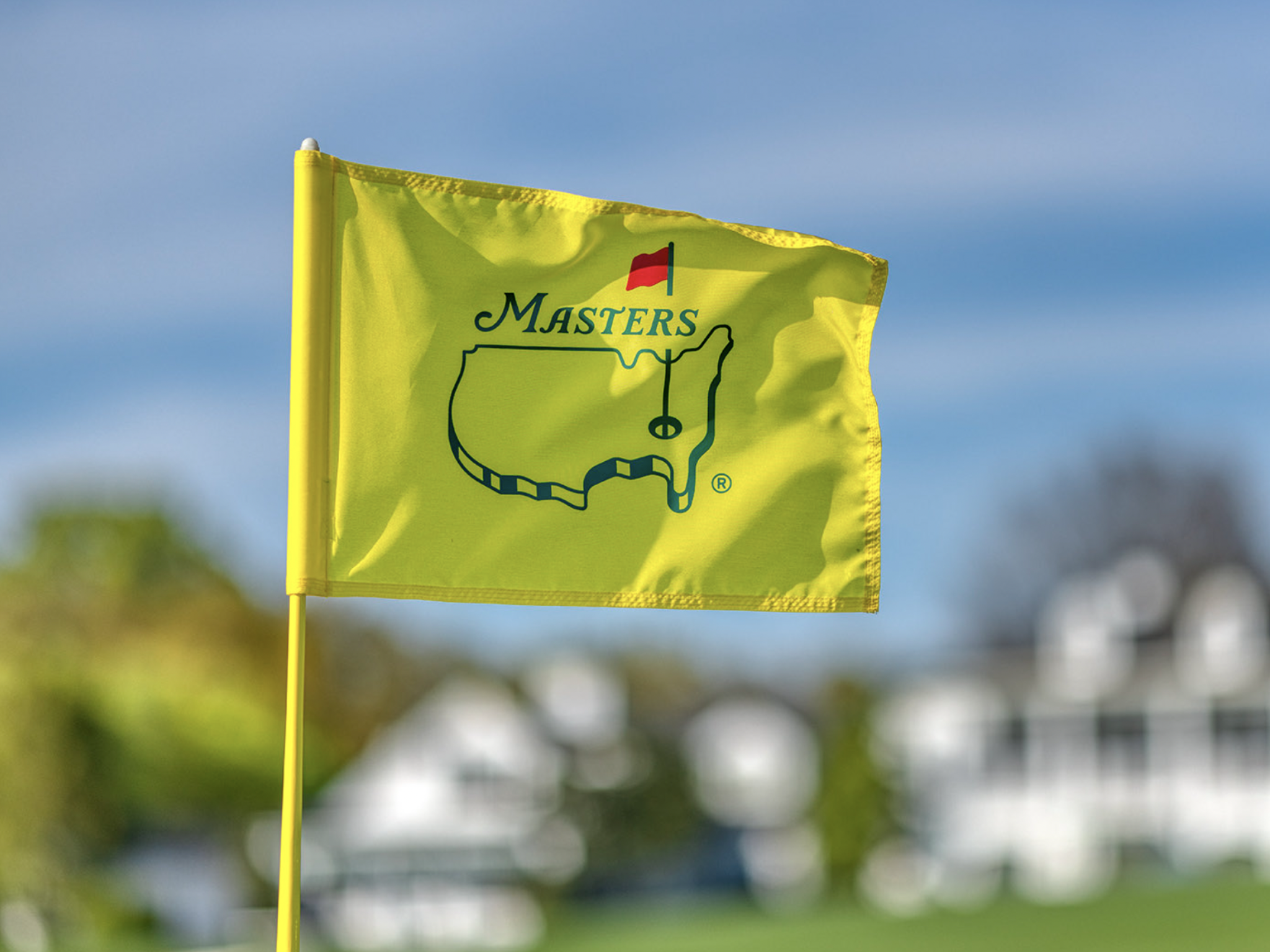
We’ve finally reached The Masters and excitement is at an all-time high. The world of golf has been fractured for the better part of two years, but for a week at Augusta National, all of the outside noise will disappear. All of the best players in the world will be together seeking to make history.
In addition to betting on The Masters champion. This is one of the few weeks of the year where there are so many more markets to explore, with value to be had in plenty of different categories.
Throughout this article, I’ll discuss all of my favorite props and players for the 2024 Masters.
Placement Bets:
Tony Finau Top 5 +750 (DraftKings):
I badly wanted to include Tony Finau in my outright betting selections, but I simply ran out of room on my card. Additionally, it’s slightly difficult to see him hitting the putts necessary to win the Masters on back nine on Sunday. However, I do strongly believe he will play great golf this week at Augusta National.
In his past 24 rounds, Finau ranks 4th in Strokes Gained: Approach is always amongst the best drivers of the golf ball in the game. Back in 2019, Finau had a great chance to win The Masters. I expect him to be hanging around over the weekend once again in 2024.
Gary Woodland Top 20 +550 (DraftKings), Gary Woodland to make the cut -110 (DraftKings):
Last season, Gary Woodland had his best ever finish at The Masters in his eleven tries. The 39-year-old finished T14 and played incredibly steady across all four rounds.
In Woodland’s most recent start at the Texas Children’s Houston Open, he struck the ball incredibly well. He led the field in Strokes Gained: Approach (+8.8) and Strokes Gained: Ball Striking (+10.0).
Gary has been working with Butch Harmon and absolutely flushing the ball both in tournaments and during practice.
Woodland appears to be healthy once again and in a great place physically and mentally. If he can build off his impressive performance at Augusta last year, he can place inside the top ten in 2024.
Additionally, the make the cut number on Woodland seems generous considering the number of players who miss the cut will be relatively small this week. Woodland is striking it well enough to make the cut even if he’s hindered by a balky putter once again.
Thorbjorn Olesen Top 20 +400 (FanDuel):
The Thunder Bear, Thorbjorn Olesen, made his Masters debut in 2013 and finished an incredibly impressive T6 for the week. In the two additional starts he’s made at Augusta National since then, the Dane has continued to be incredibly solid, finishing T44 and T21.
This week, Olesen heads into the week playing some good golf. He gained 3.8 strokes on approach and 5.52 strokes around the green at last week’s Valero Texas Open on his way to a strong T14 finish. Back in January, he won the Ras Al Khaimah Championship on the DP World Tour.
Olesen has the skill set to be successful at Augusta and seems primed for a good performance this week.
Top Nationalities:
Sergio Garcia Top Spanish Player +280 (DraftKings):
I believe Sergio Garcia can get into contention this week with the way he’s striking the ball in addition to his good vibes with a refurbished version of the Scotty Cameron that he used at the 1999 PGA Championship at Medinah.
I am slightly concerned about the emotional letdown he may face after losing in a playoff at LIV Miami, but I believe a veteran and former Masters champion should be able to regroup and focus on an event far more meaningful.
This is essentially a tournament head-to-head with Jon Rahm at +280. While Rahm deserves to be respected this week, the history of the lack of success of defending champions at The Masters is difficult to ignore.
Joaquin Niemann Top South American Player -230 (FanDuel):
While I hate paying this much juice, I don’t see a world in which Joaquin Niemann isn’t the top South American this week at The Masters. Joaco comes in playing better golf than anyone in the world not named Scottie Scheffler and has a serious chance to win the green jacket.
He only needs to beat two players: Emiliano Grillo and Camilo Villegas.
Tournament Head-to-Heads:
Justin Thomas -110 over Collin Morikawa
JT isn’t having his best season but is playing a lot better than he is getting credit for at the moment. In the past three months, there are only six players on the PGA Tour who have averaged 1.7 Strokes Gained: Tee to Green or better. Justin Thomas (+1.7) is one of the six and is currently tied with Rory McIlroy (+1.7).
Morikawa, on the other hand, has been extremely poor with his irons, which is incredibly uncharacteristic for him. I can’t help but feel like something is completely off with the two-time major champion.
Tony Finau -110 over Wyndham Clark
I explained in the placement section why I’m so high on Tony Finau this week. With how well he’s striking the ball, it seems as if his floor is extremely high. I’m not sure if he can make the putts to win a green jacket but I believe he will be in the mix similarly to 2019 when Tiger Woods emerged from a crowded pack of contenders.
Clark is a debutant, and while some debutants have had success at The Masters, it certainly poses a challenge. I also don’t believe Augusta National suits Clark as well as some of the other major championship venues.
- LIKE9
- LEGIT5
- WOW3
- LOL0
- IDHT0
- FLOP0
- OB0
- SHANK3
-

 19th Hole1 week ago
19th Hole1 week agoDave Portnoy places monstrous outright bet for the 2024 Masters
-
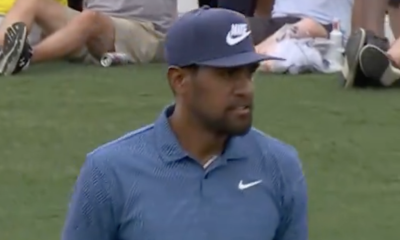
 19th Hole2 weeks ago
19th Hole2 weeks agoThings got heated at the Houston Open between Tony Finau and Alejandro Tosti. Here’s why
-

 19th Hole1 week ago
19th Hole1 week agoTiger Woods arrives at 2024 Masters equipped with a putter that may surprise you
-

 19th Hole2 weeks ago
19th Hole2 weeks agoReport: Tiger Woods has ‘eliminated sex’ in preparation for the 2024 Masters
-

 19th Hole3 days ago
19th Hole3 days agoTwo star names reportedly blanked Jon Rahm all week at the Masters
-

 19th Hole2 days ago
19th Hole2 days agoNeal Shipley presser ends in awkward fashion after reporter claims Tiger handed him note on 8th fairway
-
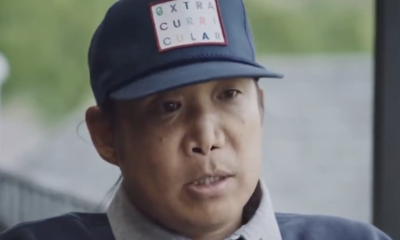
 19th Hole2 weeks ago
19th Hole2 weeks agoAddiction, spinal fusion, and scam artists – Everything Anthony Kim revealed in candid interview with David Feherty
-
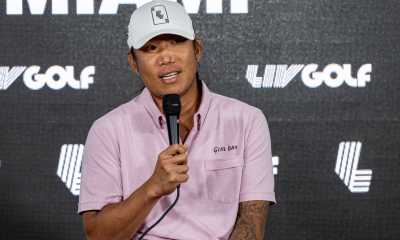
 19th Hole2 weeks ago
19th Hole2 weeks agoAnthony Kim says doctors told him that he ‘may not have much time left’ ahead of LIV return



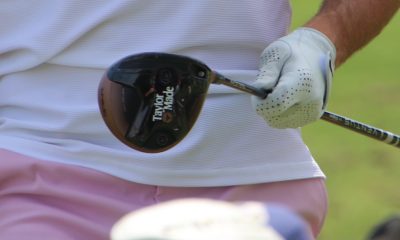

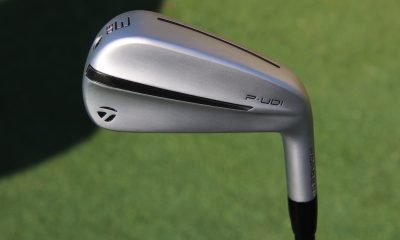



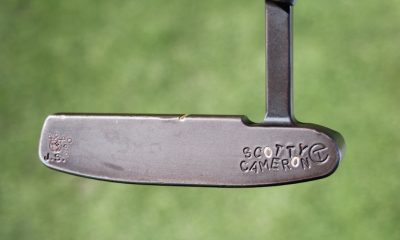

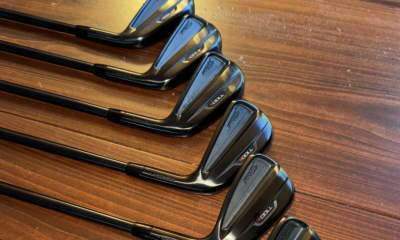

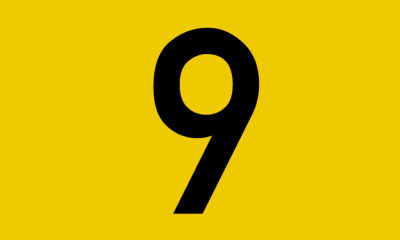







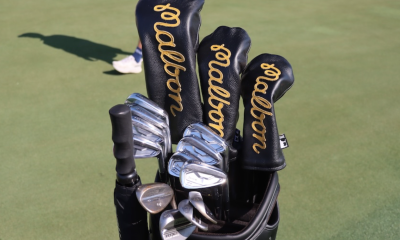

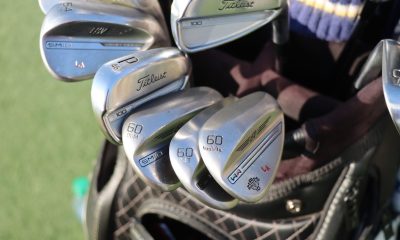

PBB
Jun 25, 2020 at 2:19 pm
Backwards. Full toe hang putters want to close on the backswing and open on the follow through. Better for straight back / straight through strokes.
Face balanced putters want to open on the backswing and close on the follow through. Better for strong arc putters.
A. Paul McDonough
May 30, 2021 at 1:30 pm
You are CORRECT about Toe Hang Putters closing, Face to Path, in the Backstroke and Opening Face to Path on Forward Stroke.
However, Face Balanced Putters stay Square to Path Backwards and Forward.
An “Arc Stroke” Player will Pull, and/or Hook Putts with a Face Balanced Putter.
A “Straight Path” Player will be able to get away with minimal Toe Flow, but TOO MUCH Toe Flow will lead to Push and/or Slice Putts.
Bruce
May 11, 2019 at 1:35 pm
re: If the toe of the putter is pointing at 7:30, that is generally referred to as 1/4 toe hang.”
If 9 o’clock is face balanced and 6 o’clock is toe balanced, then 7:30 os 1/2 toe hang!
Tee-Bone
Sep 5, 2018 at 2:19 pm
I’m no scientist, but its pretty obvious that as the shaft is swung back, the cg, if not in-line with the path of that shaft, will want to stay behind. Meaning, a heel-shafted putter wants to CLOSE going back, not OPEN. Its a nice story to sell putters, though.
joro
Sep 1, 2018 at 3:18 pm
And yet they still stick by that old thinking. The fact is the Putt is going to go where the face is facing regardless of your stroke, so does it really matter if you are a swinging gate or back and through ? Watch on TV when they show from behind and you see by the set up where the face is pointing and the ball will go there regardless of the stroke, aim left, the ball goes left.
Rich
Aug 14, 2018 at 7:58 pm
I’m a straight back and thru stroke guy and use a mallet and at times a 8802 and haven’t changed my stroke ,but the 8802 has a super stroke grip and that helps..
Geohogan
Aug 22, 2018 at 8:37 pm
Super stroke grip, increases counter weighting ie lowers swing weight
and thereby less sensitive to the head, which makes it easier, more natural to control the stroke.
Geohogan
Aug 22, 2018 at 8:40 pm
Guessing your 8802 with super stroke grip is B10-C4 swing weight.
Chuck
Aug 10, 2018 at 3:28 pm
In the lead photo, what is the putter that is second from the right?
Rusty Trombone
Aug 3, 2018 at 9:27 pm
I went from a face balanced Musty Putter, to the Ping sigma G Tyrone, to the Scotty Cameron 5.5m, then to my dad’s old Taylormade (lots of toe hang) and started putting lights out with it. Just received the Taylormade TP Soto today, and although it doesn’t have the same plastic pure roll insert as my dad’s, (it’s got a metal “milled insert”) it has similar toe hang, and look forward to testing it out. Definitely want to try the SAM thing another poster mentioned.
stuart burley
Jul 28, 2018 at 10:15 am
The explanation of the COG in relation to the shaft is very good. Fact is though that the opening and closing and clubface torque have been proven to be the opposite. Good golfers aim slightly left and hold the clubface off through impact (negative gamma torque). Poor putters aim slightly right and over rotate during impact (positive gamma rotation). This is easier to do with a face balanced putter due to the removal of clubface torque.
shawn
Jul 29, 2018 at 10:35 pm
No, you are wrong about the COG. What Peter has shown is incomplete because you must also consider the COG of the putter head itself which may be well behind the “sweet spot” shown on the putter face. You must determine where the red line axis intersects the putter head to fully understand putter mechanics. And if you are applying torque to the putter you are incompetent.
Geohogan
Jul 29, 2018 at 11:24 pm
Whether a pro or am, impact between the putter face and the ball is
one, one thousandths of a second. There is no gamma rotation in one, one thousandths of a second, positive or negative.
Stop perpetuating mythology.
RBImGuy
Jul 27, 2018 at 8:27 am
I am a great putter and putt well with any sort of putter.
its the Indian not the bow
billwill
Jul 27, 2018 at 1:45 pm
So yer an “Indian”? Which tribe… or is it just a lot of sitting bull?
Geohogan
Jul 27, 2018 at 4:42 pm
Cant fool us, RBiMguy,
welcome to Golfwrx, Most Interesting Man in the World.
https://www.pinterest.ca/pin/230387337164228759/
Harv
Jul 26, 2018 at 7:39 pm
I got toe hang… but I just use a nail clipper…
HDTVMAN
Jul 25, 2018 at 10:50 pm
Another very important part of the putting decision is the grip. Thin, thick, flat, round, hard, soft…there are no right or wrongs, whatever you like.
Socrates
Jul 25, 2018 at 9:24 pm
Seems like a regurgitation of mythology with no real data to substantiate the claims. Plenty of players on Tour (I’ll use Tour players since they are the best putters out there) who use face balanced putters and have an arcing stroke. And plenty that use a toe hang putter that are SBST. Reminds me of how people thought they knew how to make the ball curve until the “new” ball flight rules told us what really happens.
Caroline
Jul 25, 2018 at 11:27 pm
Nothing, absolutely nothing is more important in golf, pitches, chips, putting..then hand eye coordination…pros have so much of it that trying to do what they do is impossible unless you have that coordination yourself. For us amateurs golf is an adventure every time we step on the first tee. Amateurs that improve and get better only do so because they stick with what ever they found that gets them into the hole. Sadly most amateurs are at the mercy of what ever the next swing,putt, chip article some “golf” instructor has published this month. If you find a way that gets it into the hole that is your secret.
Cris Kennedy
Jul 25, 2018 at 8:36 pm
The only putter you want is the one you paid SO MUCH MONEY FOR that you can never ever change to something else because, after all, you spent WAY MORE MONEY than you can ever justify, or even recover from financially. This way…you can never change putters. It FORCES you to learn how to use that putter; i.e., you’ll finally learn how to putt and not keep thinking, “….maybe my problem I need the latest and greatest (different) putter that___________uses on tour……!!
Cameron Diego
Jul 26, 2018 at 11:09 am
Chris, you are so right. I’ve been making payments on my Scotty Cameron putter for the last fifteen years. It is almost paid off (only have five more years to go) and in the last two years, I have only three-putted once.
Terry Porvin
Jul 25, 2018 at 8:04 pm
There may be an error in the 2nd to last paragraph of the article. From my understanding, if a right handed golfer is missing putts right, he/she may need more to hang to square up the face & vise versa.
Scott S
Jul 27, 2018 at 7:59 am
Terry- When I read that I thought the same thing. More toe hang would create a greater amount of putter face closing during the stroke would it not? The only thing I could think of was perhaps with less toe hang the putter would not open up as much to begin with and effectively reduce overall opening/closing of the face. I would love to hear a greater explanation of this or a correction of what was written.
A. Paul McDonough
May 30, 2021 at 1:44 pm
Terry, Toe Hang Putters CLOSE – Face to Path – BACK and OPEN – FtP – going Forward. Coming from Inside to Square to Inside (Arc Stroke) with a “Closing” Face would produce either Pulls and/or Hooking Putts.
Face Balanced stay Square to Path.
A “Straight Line” Stroke Player can get away with minimal Toe Flow, too much would lead to Push and/or Slice Putts.
JR
Jul 25, 2018 at 2:44 pm
I find reading the putt correctly helps me make more putts.
billwill
Jul 27, 2018 at 1:44 pm
No kidding…. 😮
Joe Perez
Jul 25, 2018 at 2:15 pm
Wonderful article, but I still can’t figure out why sometimes I prefer a face-balanced mallet and other times, one with a lot of toe-hang. ????
Geohogan
Jul 28, 2018 at 12:53 am
“Change is as good as a rest?”
When we change it up, it stimulates our brain.
Its not toe hang or not toe hang, its the variety that increases focus and we do better .. until we need another fix.
Neurologists say, to change the route home from work every day. It stimulates neurons. Change in our golf prevents atrophy.
Billy
Apr 19, 2019 at 5:27 am
You hit the nail on the head. I just bay’d an O Works 1W and boy am I making putts!
CJ
Jul 25, 2018 at 1:50 pm
While there are always typical negative responses, most poor putters can’t read greens. Using arc style trainer and putting rh only for rh players helped me tremendously. Thanks for the article OP.
BL
Jul 25, 2018 at 12:34 pm
Toe hang can be very misleading. See: Bullseyes.
dtrain
Jul 25, 2018 at 12:22 pm
So what does this article prove that I haven’t seen 1000 times before? How exactly is this a “deep dive” More like sticking your toe in the kiddie pool. How about some serious testing, with actual golfers?
Peter Schmitt
Jul 25, 2018 at 11:50 am
Thanks for the discussion, folks. There’s a lot to unpack here and frankly there wasn’t enough room to talk about concepts such as toe up, face balanced at impact, and the like. This is intended to serve as a 101-level discussion to cover the “traditional” spectrum of one aspect of putter design. This should aid in having an informed discussion with a fitter, which IMO is the proper conclusion of the article. Go get a proper fitting with a qualified individual.
Don
Jul 25, 2018 at 2:58 pm
You also failed to mention how the actual “connection point” of the shaft to the putter head affects things. For example, your first picture (the one showing the face-balanced putter with the axis of the shaft pointing directly at the impact sweet spot) would actually create torque (twist) at the moment of impact because even though the axis of the shaft is pointed at the sweet spot, the shaft “connects” toward the heel. Now, contrast this to a center-shafted putter that has the exact same axis of the shaft but that connects to the putter head with no goose-neck. It would not twist when impacting the ball because it connects at the point where the sweet spot actually is. From a “physics” standpoint, a center-shafted putter would seem to be more ideal even though the axis of the shaft would be exactly the same as one with a goose-neck.
engineer bob
Jul 26, 2018 at 4:20 pm
Why is my scientifically valid comment being held for moderation?
Harv
Jul 26, 2018 at 7:38 pm
…. because if you’re too smart they will delete your comments because the don’t want the gearheads to blow up their heads…
Jimmie
Jul 25, 2018 at 9:16 am
How about putters that are perfectly 360 degree balanced, which means either no toe hang or any toe hang you desire. It is ideal as there is no bias and perfect feel. I got one from ebay P&si-Egos putter.
PT
Aug 1, 2018 at 9:00 pm
Yeah but you notice on their website that they have no video examples of anybody actually making any putts with the putter? Nobody! But they have videos of everybody else missing.
QB
Jul 25, 2018 at 9:02 am
You neglected to mention toe up putters, which point to 12 noon! 12 o’clock toe hang allows the face to remain square throughout the stroke, they’re nearly impossible to pull or push. Been bagging one for a couple years now and changed my game. Love my Edel brick but I believe odyssey came out with a line of toe up recently as well.
Jimmie
Jul 25, 2018 at 12:16 pm
I think Odyssey introduced a toe-down putter… just like Axis 1.
Antonio
Jul 25, 2018 at 3:16 am
Great article, thanks!
However I do not agree on the conclussion. By own experience If you tend to miss right a more toe Hung putter will help you close the face at impact and bring it more square, provided of course that you have and arc putter swing as you mentioned.
Scott S
Jul 27, 2018 at 8:04 am
Agreed!
Jim McPherson
Jul 25, 2018 at 1:48 am
So what is the consensus on putter fittings? Worth it?
Or is it all about rolling what appeals to the eye and then putting in the practice?
HDTVMAN
Jul 25, 2018 at 10:47 pm
I stress to my customers, before buying a putter, have a PGA Professional go thru the SAM, Science In Motion, program. It’s 90 minutes and $50 at our shop, and well worth it. It’s used at the Callaway Performance Center and TM’s Kingdom, and will show you your arc & strike angle, helping you to pick out the correct putter. We allow customers to compare their current putter to whatever putter on the floor that they are considering purchasing. Best $50 you will spend.
engineer bob
Jul 24, 2018 at 9:57 pm
… putter shaft axis… putter center of gravity… torque… moment… moment arm.… OK, stop here!!!
The table top test for toe hang is good, but let’s complicate it with some simple science.
Hold the top of your putter grip between the finger and thumb and twirl the hanging putter. If the shaft and spin axis coincide, the putter is face balanced. If the shaft rotates outside of the spin axis and wobbles, it’s not face balanced. (p.s. the vertical spin axis is called the longitudinal gravitational axis 😮 ).
David
Jul 24, 2018 at 9:21 pm
Check out the videos from the guys at Directed Force putters if you want to see what a crock “face-balanced” putters are. They absolutely, positively do not stay “square the the line” in any way, shape or form.
No I don’t work for Directed Force.
Yes, I bought one.
No, I no longer use it.
But, hey, let’s at least TRY to get the science right….
gif
Jul 24, 2018 at 9:59 pm
Are you a “feeel” putter?
Geohogan
Jul 24, 2018 at 10:40 pm
What if a putter did stay square to the line?
Putter ball contact is 1/1000 second for 1/4 inch.
That is all she wrote.
…so whether putter face stays square after impact is meaningless.
It is just more marketing BS, like oversize grips.
Check out the putters used by two of the greatest putters who ever lived, Bobby Jones and Bobby Locke.
Check out their putters.
gif
Jul 25, 2018 at 12:12 am
But you don’t realize that a putter represents a golfer’s fhallic symbol… his masculinity on the greens as he bravely putt-putts the ball into the hole… ploop 😮
acew/7iron
Jul 24, 2018 at 8:51 pm
Funny you mention big grips…I kept inching towards adding larger and larger ones until one day I realized I could not control distance or direction at all. Got a small grip and back to lagging them close or making them from time to time.
Geohogan
Jul 24, 2018 at 10:33 pm
ace, you werent adding larger and larger grips, but rather adding more and more weight to the butt end of the club. Some oversize grips will be 75 grams heavier than std(50 grams). Thats serious reduction in swing weight, maybe from D2 to C0? Serious reduction in clubhead feel.
IMO, adjustable counter weights is the way to go with putters. Its been proven that performance improves (up to 30 days) when we make changes; and if you believe a change will make a difference for the better (placebo effect), there is 60% chance you will improve.
gif
Jul 25, 2018 at 12:17 am
75 grams minus 50 grams = 25 grams… almost 1 ounce… insignificant…. and putter swingweight is irrelevant to a tiny putting movement. You can adjust to any putter size, shape, weight if you practice enough like the pros do.
Geohogan
Jul 26, 2018 at 7:50 am
Some oversize grips will be 75 grams heavier than std(50 grams
75+50=125 grams
Geohogan
Jul 24, 2018 at 7:51 pm
Messing around with an old Powerbilt, Model 57 blade putter not unlike Bobby Jones, Calamity Jane. 33.5 inches long, B 4 swing weight. Calamity Jane was B8, if reference I found is correct.
So although complete toe hanger(6 oclock), the counter balance puts so much weight in the hands, rather than the putter head,
that the face is very controllable.
Makes me think that counter balancing may be the reason for the fad to go to oversize grips. It must reduce Swing weight by at least 10 SW points , to add 50+ grams to the handle, with no compensation to the head.
I’ll bet if golfers maintained swing weight when they put oversize grips on their clubs the fad would go away. ie. its counter balancing resulting in significantly lower SW, that gives more clubhead control, not fatter grips.
gif
Jul 25, 2018 at 12:20 am
Those old 1-iron shaped vintage putters were used in the days of the “stymie”… where you had to loft your ball over your opponents ball to get to the hole… without contacting his ball…!!!
Geohogan
Jul 26, 2018 at 8:38 am
Many golfers today use putters with 6-10 degrees of loft and dont do it because of stymies. For one thing it allows forward lean or hands ahead and still maintain loft to get the ball rolling.
How much loft is remaining if putter has 2 degrees of loft and hands are ahead at impact?
Geohogan
Jul 26, 2018 at 2:13 pm
https://www.youtube.com/watch?v=_TCObKqRwtQ
1:20
Ben hogan , stymied, using an L Wedge?